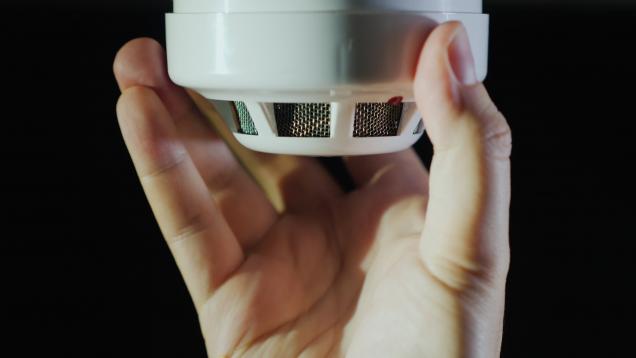
How Do Smoke Detectors Work?
What a Smoke Detector Does
A smoke detector is able to detect fires by sensing small particles in the air using its intelligent technology. Once the smoke detector has detected the particles above a certain threshold, the alarm will sound so that you and your family can get to safety and call 000.
Smoke detectors save lives.
The Two Types of Smoke Detectors
There are two options available when it comes to smoke detectors. The first option is photoelectric, and the second is ionization. Sometimes, you may even have a combination of the two.
Let’s take a look at the different types of smoke detectors.
How a Photoelectric Smoke Detector Works
Photoelectric heat detectors usually respond better to fires that are smouldering. Essentially, fires that begin by smouldering for a long period of time will be caught better by this alarm. Photoelectric alarms use a photoelectric sensor as well as a light source.
They work by sensing as smoke enters the chamber and crosses the light beam’s path. From there, light is scattered by the smoke particles toward the sensor. In turn, this triggers the alarm.
How an Ionization Smoke Detector Works
Ionization smoke detectors are far more responsive to flames that are raging, fast, and hot. They contain radioactive material within them that passes between two electrically charged plates. This then created an ionization chamber.
This then ionizes the air and creates a current that flows freely between the two plates. If smoke is to enter that space, it disturbs the ionization process and absorbs alpha particles. This then reduces the current and causes the alarm to activate.
The Pros and Cons
Photoelectric Detectors
Pros
- Does not contain radioactive materials which make them safer.
- Ideal for detecting dense smoke.
- Less prone to false alarms from shower steam or cooking fumes.
Cons
- Require more current to operate.
- Sensitive to insects and dust particles which means that regular maintenance is needed.
- Expensive to maintain.
Ionization Detector
Pros
- Ionizing smoke alarms are able to outperform photoelectric smoke alarms when detecting flaming fires with very little visible smoke.
- Cheaper than photoelectric detectors.
Cons
- The use of radioactive materials is quite concerning.
- Very sensitive which can lead to false alarms when you’re cooking.
- Not as responsive to smouldering fires.
The Bottom Line
For the best protection possible, you should use both types of smoke alarms. A combination of the two will ensure that any type of fire is picked up before anyone is hurt. When getting detectors installed, you’ll need a licensed electrician to help install your new smoke detector. Keep your home and family safe when you install a smoke detector.



